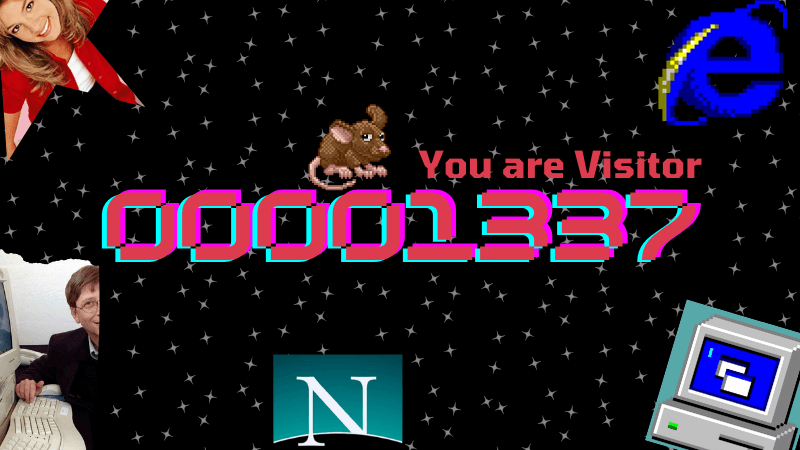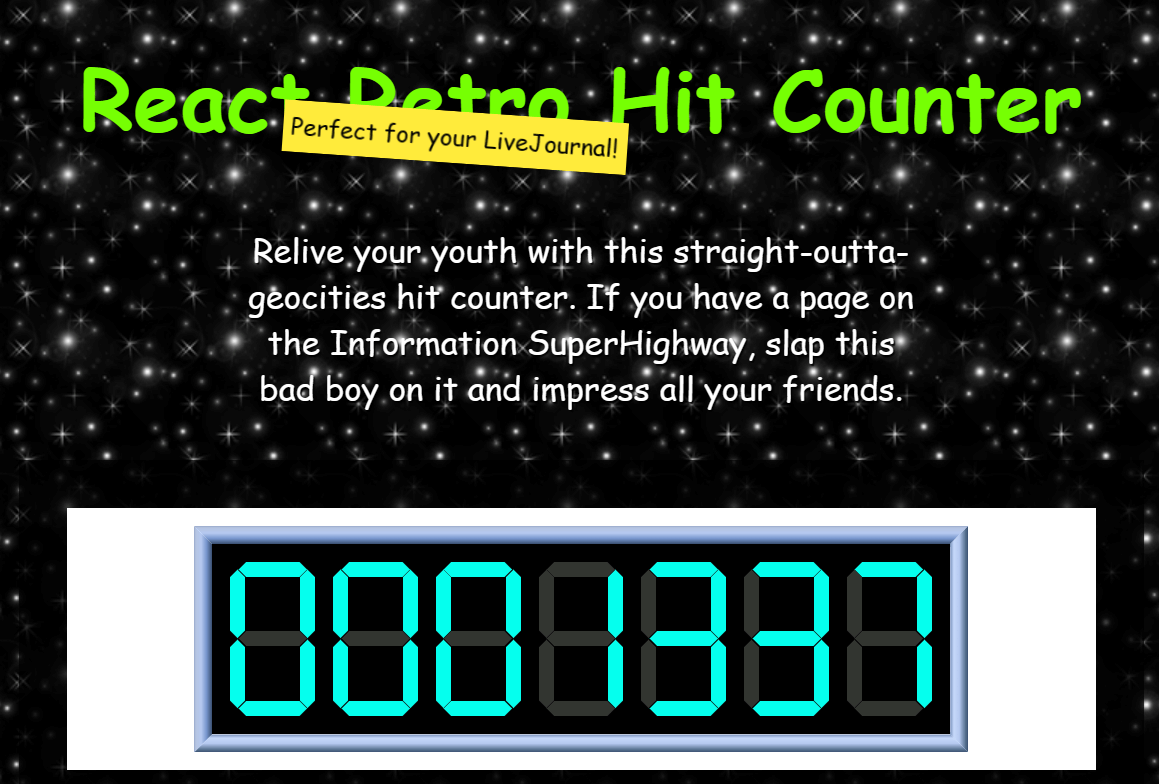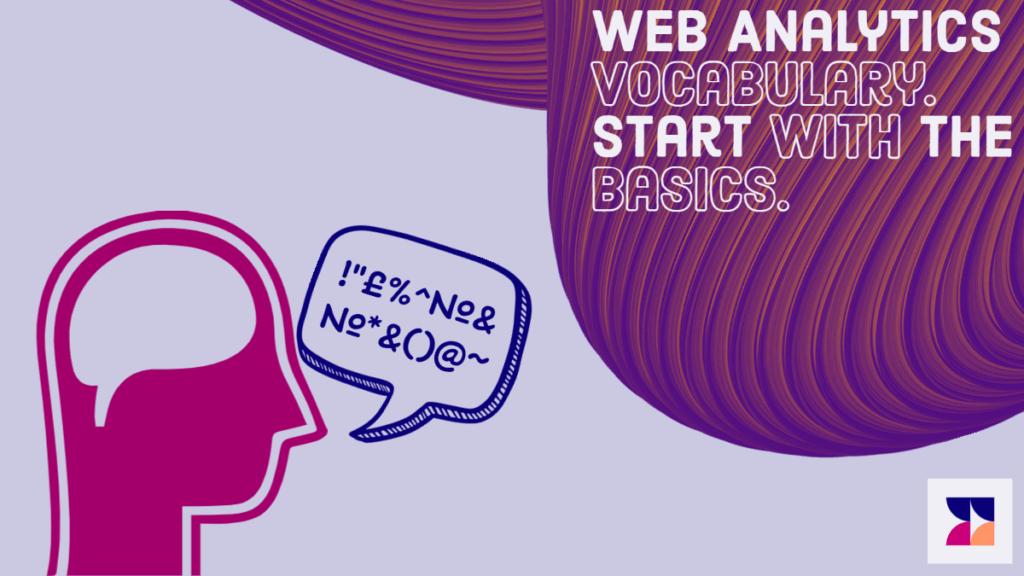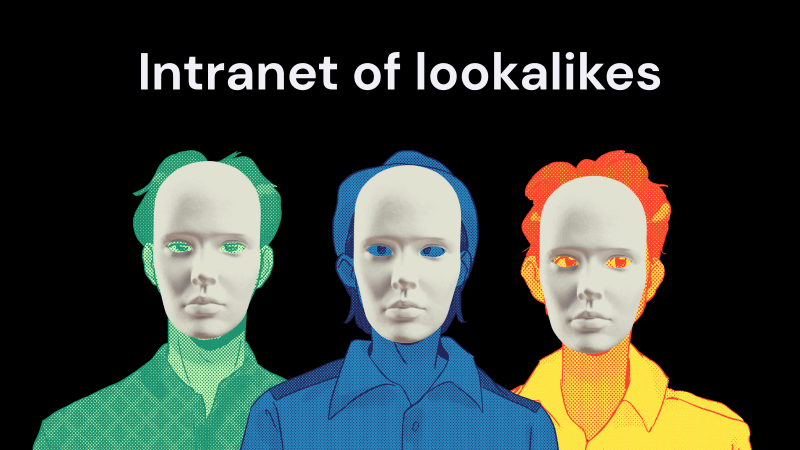If you are this many years old, you probably remember the beginning of the graphical Internet. Yes, graphical. BBS and other text-only protocols were fun, but it was the WWW that captured minds and imagination. This imagination led to the Dot-com bubble, the Social Media bubble, the AI bubble… But we are getting ahead of ourselves. Back to the ’90s!
I’m not sure about you, but when I think about the ’90s, the image of GeoCities springs to mind. The blink and marquee tags in early HTML were considered tasteful design choices. The war between Netscape and Internet Explorer was in full throttle.
And obviously, the most important thing: it was the time when we coined the first-ever “like” button on the Internet, sort of. I’m talking, obviously, about the Hit or Visitor Counter.
In those early days of the World Wide Web, the idea of dynamic, JavaScript-rich websites was yet to arrive. This meant that pretty much all information on the website was rendered server-side. Yes, all you whipper-snappers, Server-Side Rendering was a thing in the early days as well.
The counters were often generated in Perl or PHP CGI scripts. The data itself was either a form of counter in the database, a file, or the outcome of a quick grep command against an Apache Access Log.
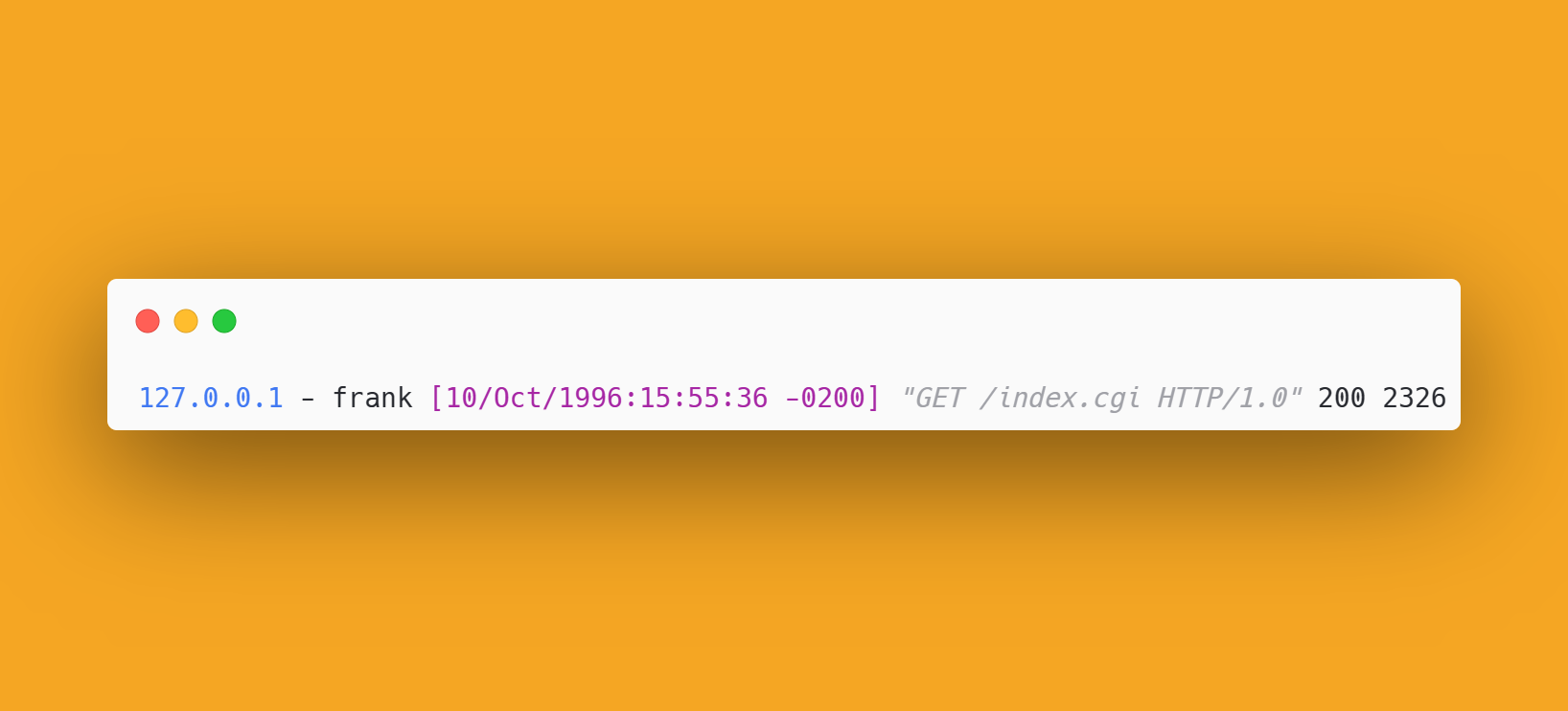
These were not sophisticated tools, often gamed, and freshly launched websites often boasted thousands of previous visitors.
Moreover, the counters, at least originally, did not account for user sessions and repeat visits. Bored teenagers, like myself, occasionally squatted on someone’s website, hitting refresh and awing at the sight of an incrementing visit count.
What’s the point of this nostalgia?
This nostalgia points towards the Internet before the oligopoly of a few major technology companies. It was, arguably, the last decade of a free, and reasonably private Internet. It was also time of wild, diverse World Wide Web. Even today, some argue that it needs to be restored.
... the internet has become an extractive and fragile monoculture. We can revitalise it, but only by “rewilding” it ...
As for privacy, webmasters weren’t paying too much attention to privacy as we understand it today. Yes, the Apache logs contained the IP addresses of the visitors, but these were nowhere centralized. It was highly unlikely that someone would be able to track you as you traversed multiple unrelated websites. Heck, even tracking your journey across sub-pages was highly uncommon.
Nowadays, almost every website out there loads a tracker script from either Google, Facebook, HubSpot, or others. Most websites showing you social engagement buttons like retweet, like, or share are loading external scripts. Your online footprint has grown exponentially since the ’90s.
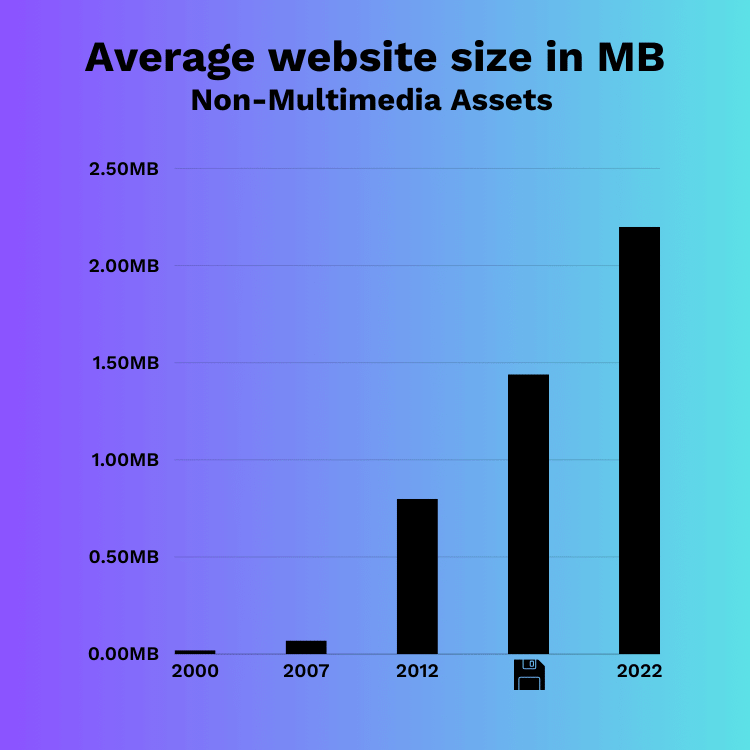
Trackers, privacy abuse, and poorly worded attempts at regulating these in the form of Cookie Banners result in websites ballooning in size.
Rose-tinted view of the past
Nostalgia is cool. We often reminisce about the past through rose-tinted glasses. But it wasn’t all good. The websites were small, the text, and code part at least. But multimedia assets, like images, animated GIFs, and later Flash animations, were easily exceeding megabytes in size.
Do you remember the BMP image format? An image of 256×256 easily buffered for a few seconds on a money-draining dial-up modem. We easily take for granted the efficient compression offered by the PNG format and tools like TinyPNG.
And the awful look and feel, Fisher-Price colours, and bouncing text were annoying at best, and felt abusive at worst.
Today, the retro look of the ’90s is reserved mostly for the enthusiasts.
Closing words
GeoCities is dead. JavaScript scripts easily weigh 2 MB on an average website, typically more than the sum of high-quality images. Long gone are the simple visitor counters. But so is our privacy and diversity on the web.
More than two decades ago, we, the website operators, then called webmasters, mindlessly slapped marquee tags and popups on the website. Today, we mindlessly add numerous JavaScript trackers and then Cookie Banner pop-ups to counter those trackers.
It doesn’t have to be this way. Enjoy building bold, great-looking websites. Delight your visitors and customers. Collect pageviews and user counts, even more efficiently than in the past. But do it without enlarging your visitors’ online footprints. Do it without annoying, intrusive, and slow Cookie Banners.
No Cookie Banners. Resilient against AdBlockers.
Try Wide Angle Analytics!
